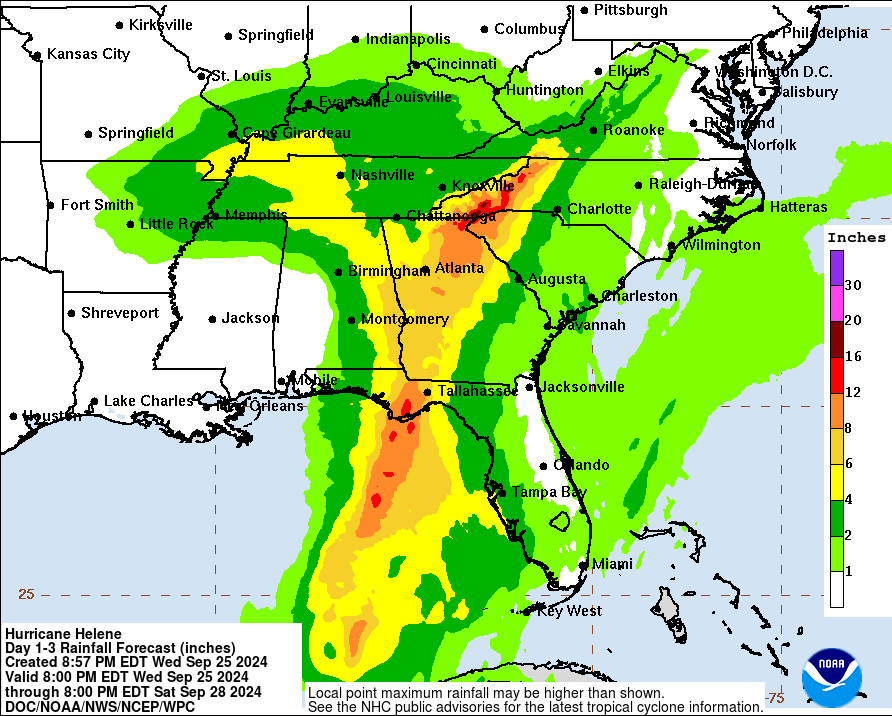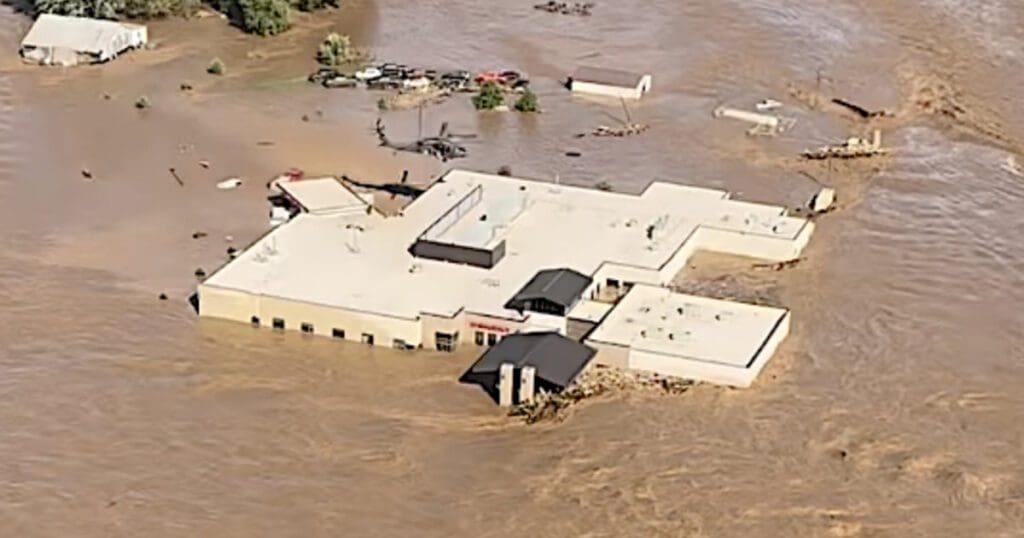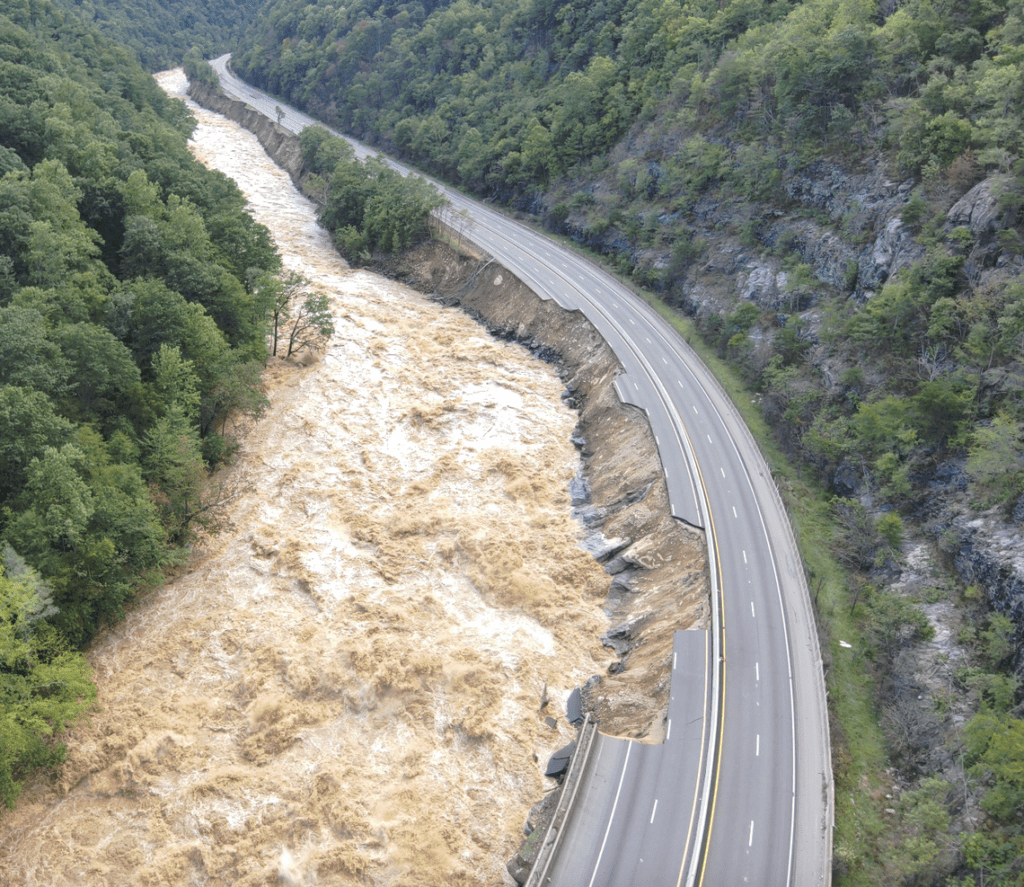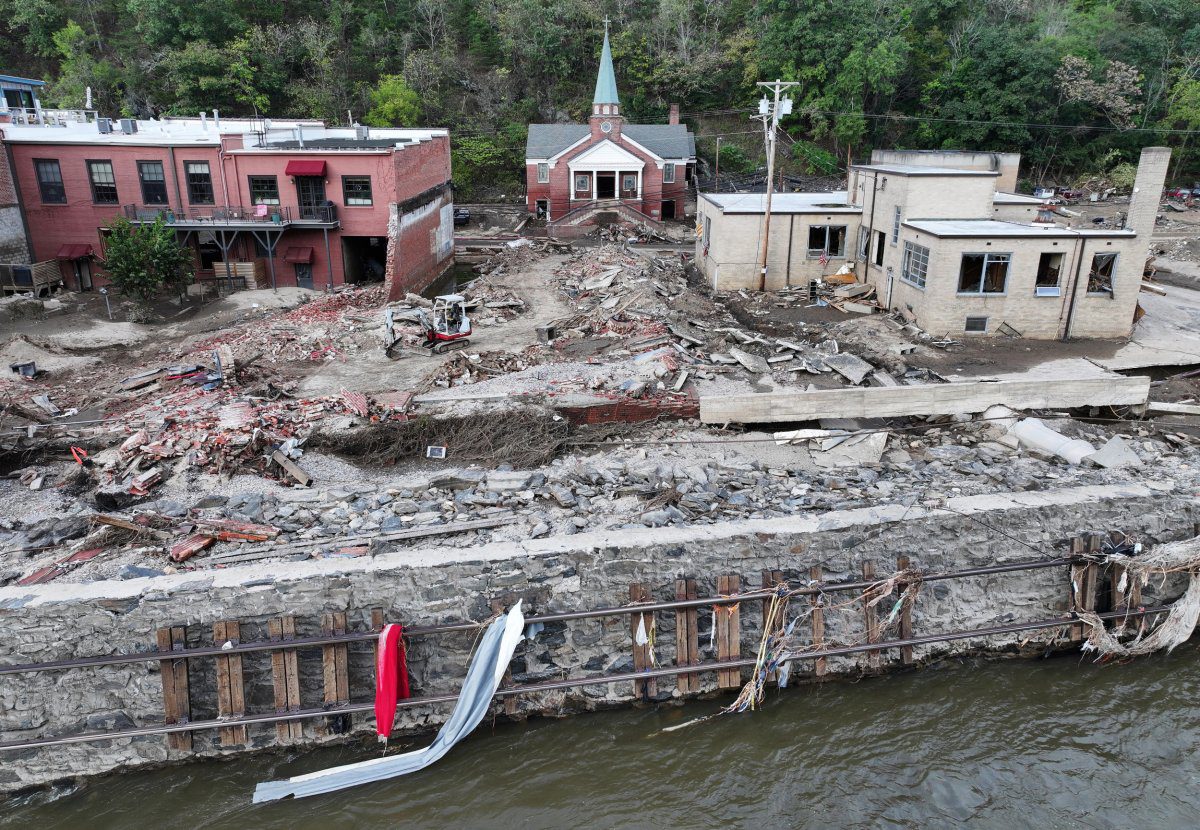Hurricane Helene: An Unfortunate Perfect Storm For Appalachia
By: Roger Sigmon – Wise News Network
Appalachia, USA (WNN) – Throughout history, many remnants of hurricanes and tropical storms have traveled through Appalachia including the Great Smoky Mountains and the Appalachian Mountains, leaving little to no damage in their wake. Why did Hurricane Helene wreak such havoc over several states with historic flooding in the mountains and foothills of the Appalachian areas of Western North Carolina, Virginia, and East Tennessee? The conditions surrounding this storm system are often called the perfect storm. What is meant by the term, perfect storm? This meteorological event is unusually severe and destructive because of a rare combination of meteorological phenomena.
The Predecessor Event
Some locations had received more than a foot of rain before Helene barreled through. A sweeping cold front across the country propelled widespread thunderstorms. This cold front stalled between the Great Smoky Mountains and the Appalachian Mountains in a small area between Virginia, Tennessee, and North Carolina, thus allowing heavy rains to be dumped for two days as it saturated the ground and caused the swelling of streams and rivers. Many areas accumulated more than a foot of rain. This first round of rain and thunderstorms is called a predecessor event. It resulted from moist air from the outer bands of Hurricane Helene.

Stalled Front
The stalled front acted as fuel for Helene. Significant moisture had been picked up from the Gulf of Mexico, and as she moved up the mountain, the uplift from the stalled low pressure produced even heavier rainfall. The heavily saturated ground and swollen bodies of water drastically increased the runoff flow coming down the mountain. Hurricane strength was maintained further inland, and speed increased while moving north. Usually, a hurricane or tropical storm will quickly lose strength as it travels over land and “starves out”; however, the stalled cold front, the strength of the storm, and large amounts of moisture combined to feed her fury. At its strongest point over North Carolina and Tennessee, more than 30 inches of rain fell, and wind gusts topped out at over 100 mph. The common average of rain over most areas measured at around 20 inches. Just how powerful was this storm? In Unicoi County, Tennessee, the unimaginable water surge was estimated to have been 1.2 million gallons of water per second. It is almost twice the rate of Niagara Falls, which flows at 700,000 gallons per second. Naturally, anything or anyone in its path was obliterated in seconds.
Flooding Starts
Shortly after noon on September 27, the rapidly swelling Nolichucky River rushed upon the Unicoi County Hospital so quickly that 62 people, 54 of whom were patients, were stranded on the rooftop for hours. Their eventual rescue was by helicopter. By 11 p.m. that same night, the Nolichucky Dam, near Greenville, Tennessee, had withstood the unfathomable surge of water. Things would have been even more disastrous had the dam not held.

In East Tennessee, most of the damage occurred in the counties of Washington, Cocke, Carter, Unicoi, Johnson, and Greene. Billions of dollars in damage and dozens of deaths, along with long-term closures of roads and bridges that were significantly damaged or destroyed. A major thoroughfare between Tennessee and North Carolina, interstates 26 and 40, will have to be rebuilt in several sections.
Runoff from the mountains caused three rivers that flow from Tennessee to North Carolina, the French Broad, Nolichucky, and Pigeon, to overflow and surge through towns such as Erwin, Newport, and Greenville. Not much was left recognizable after the onslaught. Raging waters ran unrestrained and out of control for many miles, destroying homes, cars, roads, bridges, and lives.
Tennessee Governor Lee declared a state of emergency on September 27, and FEMA approved the request for money and assistance on September 28.
Pigeon River Destruction

Newport, Tennessee, took a major hit. The topography of the town played a significant role. There is the river, railroad tracks, and then the town. Once the water jumped the banks, it made a mad dash over the railroad tracks and into the town. The biggest problem has been damage to water treatment facilities and infrastructure. The Pigeon River in Newport reached levels 20 feet higher than the previous record set in 1904. Fresh drinking water has been airlifted into the area. Early estimates stated it would be weeks before clean drinking water could be restored, but there are no updates on that timeframe at press time.
Tracks to Repair
According to Northfolk Southern officials, over 21,000 feet of railroad tracks were washed out, and thousands of others were damaged by slides and debris. Railways between Newport and Asheville will take until at least January 2025 to repair. A full assessment of all damage is still many months away. Receding waters and debris removal will offer a clearer picture of the state of everything.

Open Areas
Mega tourist areas such as Gatlinburg, Pigeon Forge, and the Tail of the Dragon (Hwy 129) were minimally affected and are fully open. The Gatlinburg and Pigeon Forge areas boast shopping, national parks, attractions, dinner theaters, fall foliage, and Dollywood. The “tail of the dragon” is a stretch of Hwy 129 that runs between East Tennessee and Western North Carolina. It contains 318 curves within 11 miles. Motorcyclists and sports car enthusiasts travel from around the country to ride the dragon. It is America’s number one motorcyclist and sports car road. It is currently fully open, except for commercial vehicles, for thrill seekers to fulfill their bucket list items. If tourists plan to visit any of these areas, please check www.tn.gov for a complete list of road closures and alternate routes between North Carolina and Tennessee.
WNN©
For more WNN video news stories, visit YouTube: https://www.youtube.com/@wisenewsnetwork
For more WNN articles and news stories, visit: https://wisenewsnetwork.com
Contact WNN at [email protected]
Copyright 2024 Wise News Network. All rights reserved.
